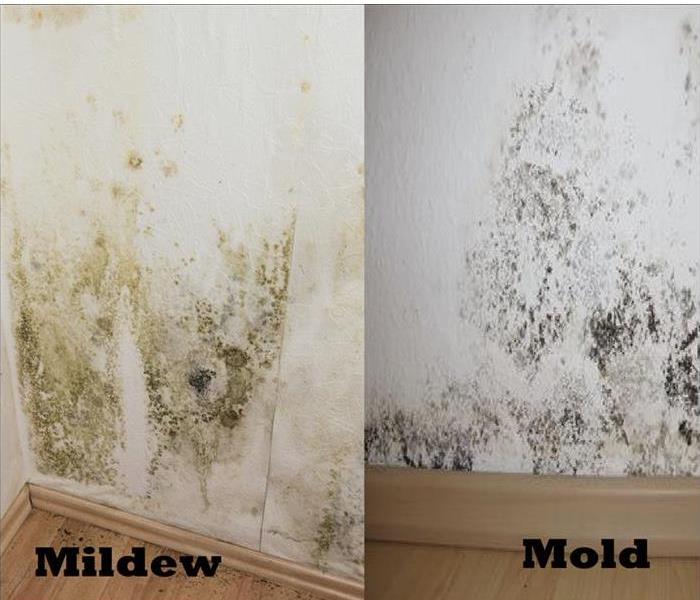Is It Mold or Is It Mildew?
1/28/2020 (Permalink)
When you have a creepy crud taking over your home, it’s hard to care if it’s mold or mildew. You just want it gone. But mold and mildew have very different effects on your home and on you; could you tell the difference between mold and mildew if you found it in your home? Let’s take a look at what makes the two fungal growths so similar – and what makes them completely different.
Mold vs. Mildew:
Mildew, for the most part, is mostly harmless, although there are a few breeds of mildew that can do damage to your home. While mildew is more common than mold, it is more of an eyesore and unpleasant to the touch, with a powdery feeling that many find nauseating
Mold, on the other hand, is much more invasive and can cause significant damage to vulnerable areas of your home. Mold tends to be fuzzy and varied in color than mildew.
Signs that you might have mold include:
• Musty odors coming from secluded places in your home
• Dark stains on walls • Leaks and water damage
• Fuzzy growths on organic matter, including walls, floors, and food
• Unexplained allergic reactions with no other allergen sources present.
So how do you get rid of mold and/or mildew? Mold and mildew remediation can be difficult, but not impossible. While we are constantly inundated with free-floating mold spores, it is possible to take preventative steps to ensure your home isn’t a hospitable environment for either parasitic growth to breed. Mitigate any leaks or water issues in your home and clean up quickly after any floods. Adequately ventilate your home and use a dehumidifier, if needed, to prevent growth in moist, humid areas. If you suspect a mold or mildew infestation, you can call in an industrial hygienist to perform necessary testing and isolate the causes in your home. For more information, visit http://www.SERVPROgreeleywindsor.com.



 24/7 Emergency Service
24/7 Emergency Service
